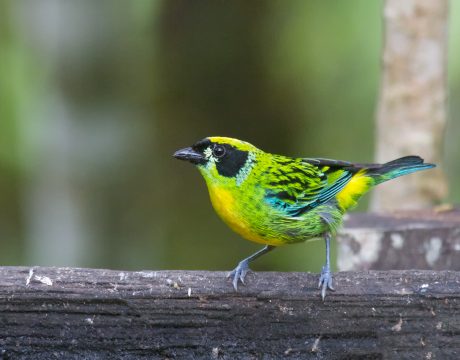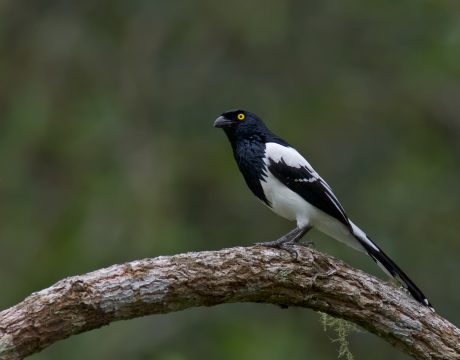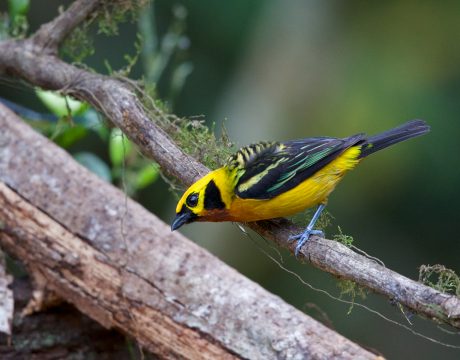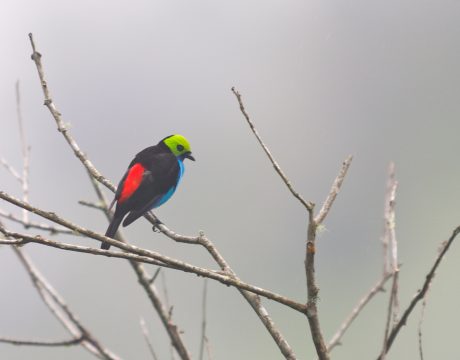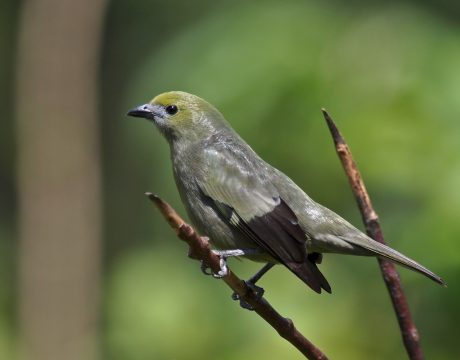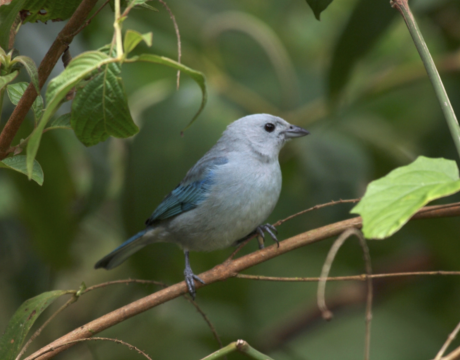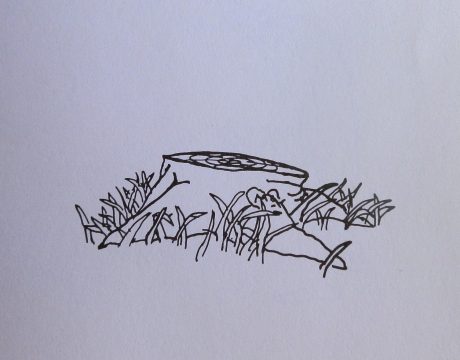Return of Bird of the Week: Green-and-Gold Tanager
Another ridiculously colorful tanager, this one from Southern Ecuador. This is the Green-and-Gold Tanager. This is another one of those birds that, when you get it in your binoculars in good light, makes your eyes water. Only the Paradise Tanageris more colorful, and it isn’t as brightly colored. Most birders, seeing it for the first time, simply gasp. This species occurs one the easterly slopes of the Andes and in western Amazonia, where it is found from southeastern Colombia and southern Venezuela south to northern Bolivia and western Brazil. It is a fairly common species in the lowlands, typically found…
Greetings from the Rubble!
TALL TALES from Juneau Eyes on the Dunleavy/Babcock administration Dispatches from the Rubble… JUNEAU IT IS Governor Mike Dunleavy, having seen the error of his ways, has “amended the call” of the PFD-focused special session to include the capital budget. He’s also called the location as Juneau, instead of Wasilla. And so, the sparkly hopes and dreams of the Republican House Minority die on the vine. They were waiting and wishing for torches and pitchforks and arm-twisting and even arrests. But after a disastrous week, including the downgrading of the University of Alaska by Moody’s to two-notches-above-junk-bond-status, and the tidal…
Return of Bird of the Week: Magpie Tanager
This bird looks familiar, doesn’t it? But looks can be deceiving. This isn’t a Black-billed Magpie with a weird yellow eye; this is a Magpie Tanager. It’s a fairly common bird of the South American lowlands, especially partially deforested and riverine areas. It’s monotypic: it’s the only species of the genus Cissopis.It’s also the longest tanager, thanks to that impressive tail. And, WC has to say, it acts an awful lot like a magpie, too. Active and noisy; the behavior of the Magpie Tanager is often described as “jay-like.” The birds quickly hop from branch to branch in denser brush….
Legislators AWOL while Alaska burns
TALL TALES from… Juneau Wasilla? Eyes on the Dunleavy/Babcock administration 3 RINGS OF DYSFUNCTION Well the “special session” in Wasilla was every bit the circus you may have imagined. The gymnasium was set up like the two chambers of the legislators and everyone had a name card. Spectators sat in the bleachers, and Sen. Mia Costello and Rep. Lance Pruitt were the ringleaders. Inside, rogue legislators received adulation from supporters. Outside, we asked this guy what the flag stood for and he said it was a Belgian flag, but he brought it because it looked scary. A bunch…
Return of Bird of the Week: Golden Tanager
Okay, we’ve had a drab – well, subtle – Palm Tanager. We’ve had a ridiculously colorful Paradise Tanager. Let’s go back to a merely colorful tanager, this time the Golden Tanager. The Golden Tanager is distributed from northern Venezuela to southern Peru, with at least nine subspecies scattered across that range. It’s a bright, golden bird, with blue and yellow in its wings. You can see the much smaller black auricular patch, and the very different coloration in the wing in this subspecies. This might be the most variable of the tanager species WC has encountered. Golden Tanagers are about averaged-sized for…
Return of Bird of the Week: Paradise Tanager
The Paradise Tanager can be difficult to see. But it’s worth the effort. It’s a canopy species, rarely coming down from the top of the jungle forest. To see it, you either need to be in a canopy tower and hope the species wanders by, or on a road along a steep slope, so that downslope treetops are at eye level. This photo is an example of the latter. Not only is it a canopy-dweller; it’s as hyperactive as a North American Ruby-crowned Kinglet. It makes the species a real challenge to see, let alone photograph. The coloration almost looks…
Public comment deadline looms; Pebble opponents vow to fight illegal permit application
As people prepare to submit their public comments on the U.S. Army Corps of Engineers Draft Environmental Impact Statement on the proposed Pebble Mine, before the final deadline this Monday, July first, Bristol Bay defenders are dissecting permitting documents and past statements in search of legal grounds and legislative options to derail the Trump administration’s rush to ram through permits for the proposed mine. Describing the Pebble Partnership’s current application for federal permits, Joel Reynolds said, “To avoid public focus on the scale of the harm that they are going to cause to the world’s greatest wild salmon ecosystem, they…
Return of Bird of the Week: Palm Tanager
Not all tanagers are brightly colored, although many of them certainly are. Some have coloration that is a little more subtle, like the Palm Tanager. The Palm Tanager is one of the most widespread and familiar birds of humid lowland forests of the Neotropics, ranging from Nicaragua south to southern Brazil and in to the Caribbean. The Palm Tanageris similar in many ways to last week’s Blue-gray Tanager, although the Palm Tanageris less likely to be found in urban areas than the Blue-gray Tanager. Palm Tanagersare common at forest borders, but also occur in the canopy of the interior of forest….
Return of Bird of the Week: Blue-Gray Tanager
It might be the most widely distributed and common species of tanager. But it’s still a very handsome bird. At almost any location between southeastern Mexico and central South America, it’s a familiar presence at forest edges, in second-growth forests and along roads and rivers. It can even be found in urban parks and gardens. Blue-gray Tanagers prefer semi-open habitats; they are not found in interior of closed canopy forest, but they can quickly colonize fresh clearings. The habitat preference means they are one of the most common tanagers around human-impacted areas. They are flexible as well in their diet,…
Hey, Alaska! Stop being Big Oil’s Giving Tree.
TALL TALES from Juneau Eyes on the Dunleavy/Babcock administration THE END OF THE ROAD -ish SINE DIE The first of at least two legislative special sessions is over. They have gaveled out “sine die” which is Latin for “without day,” meaning “without assigning a day for a further meeting or hearing.” Most people pronounce it “SY-nee DIE” which is completely wrong. If you want to impress your friends at a post-special session barbecue or cocktail party this weekend you can tell them it’s actually “SIN-uh DEE-uh.” So, now that we’ve got our obscure procedural Latin phrases in order, here’s…





